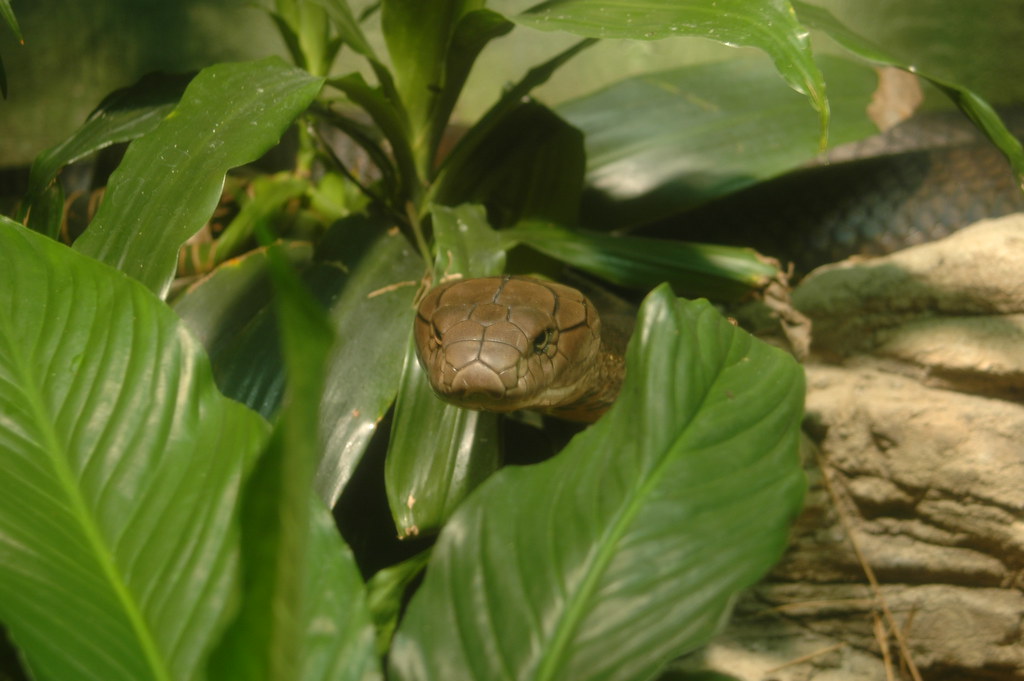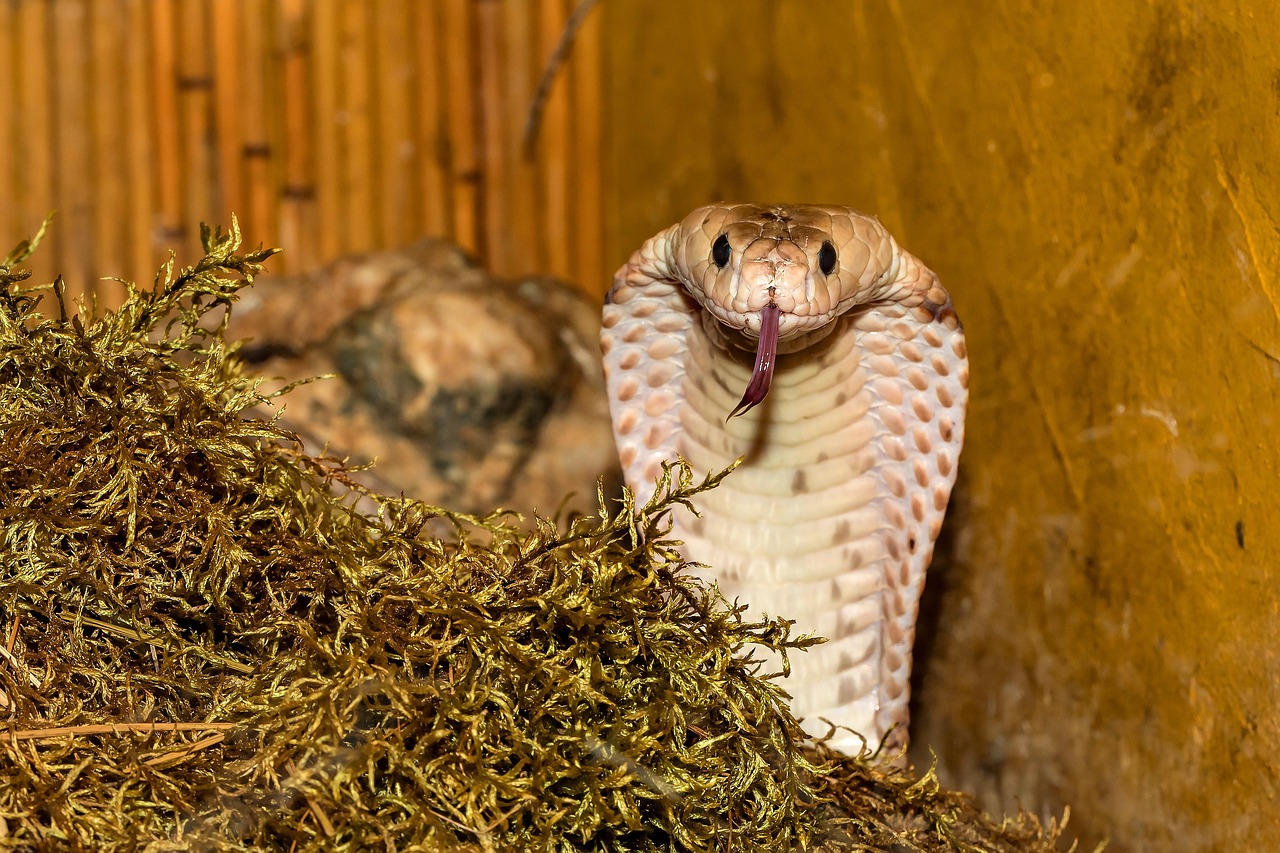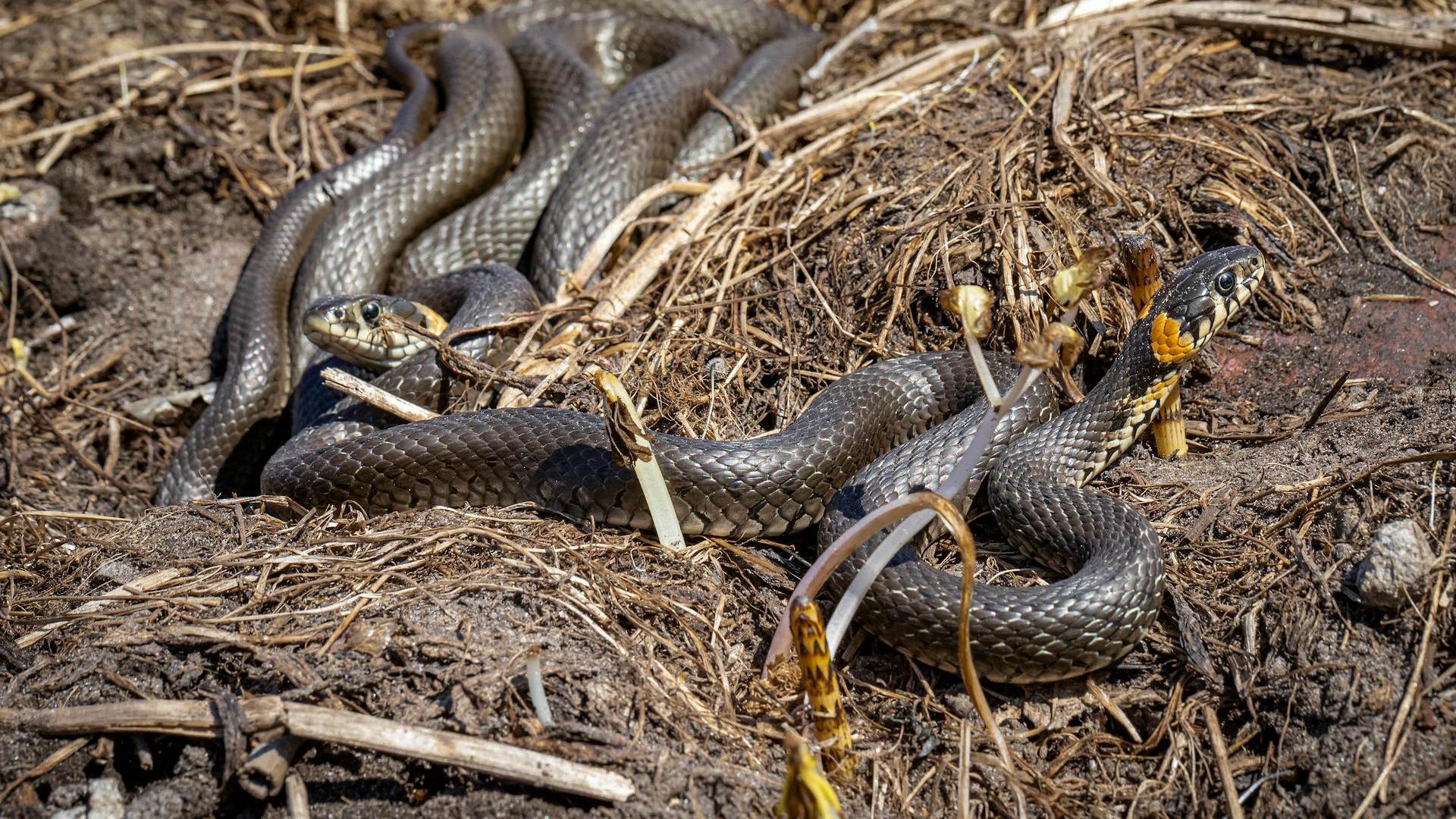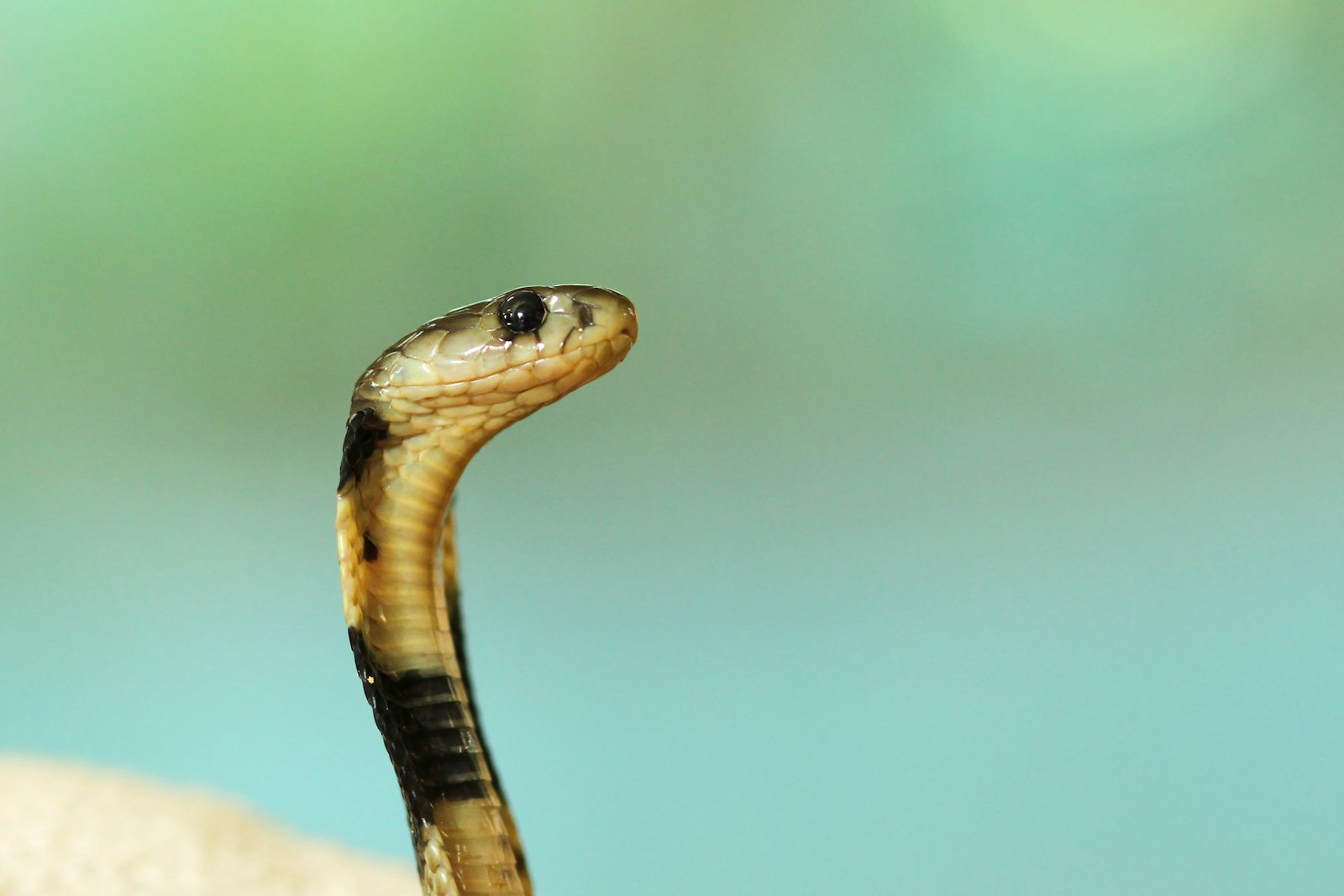In the shadowy undergrowth and sun-baked plains where venomous snakes make their home, danger lurks from every direction. While most people associate these reptiles with their lethal strikes and potent venom, the reality is far more nuanced. Venomous snakes prefer to avoid confrontation whenever possible, employing an impressive arsenal of defensive strategies before resorting to their venomous bite. From elaborate warning displays to sophisticated camouflage techniques, these remarkable creatures have evolved numerous ways to protect themselves without striking. This exploration of non-striking defense mechanisms reveals the complex behavior of venomous snakes and challenges our common perceptions of these often misunderstood predators.
Camouflage: Nature’s First Line of Defense
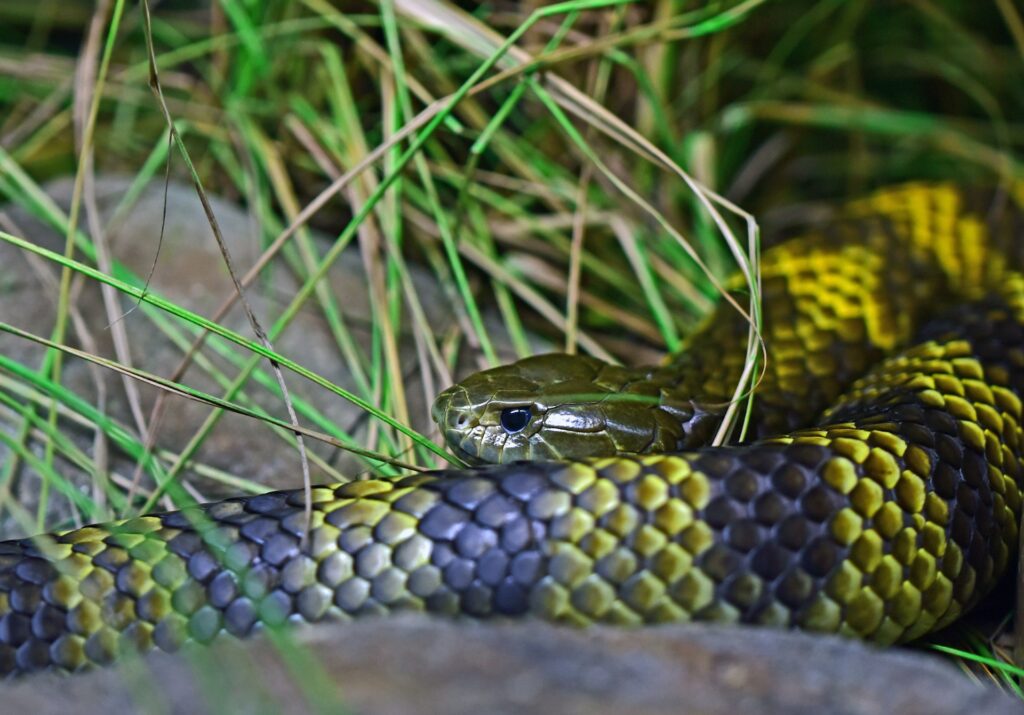
Many venomous snakes rely on camouflage as their primary defense strategy, blending seamlessly into their surroundings to avoid detection altogether. Species like the Gaboon viper possess intricate patterns that mimic forest floor leaf litter, making them virtually invisible to both predators and unwary humans. The deadly Australian death adder takes this approach further, often partially burying itself in sand or leaf litter with only its tail tip visible, which it wiggles to lure prey while remaining hidden from threats. Desert-dwelling species like the sidewinder rattlesnake have evolved coloration perfectly matched to their sandy habitats, allowing them to remain unseen until a threat has passed. This passive defense strategy is remarkably effective, as it completely eliminates the need for confrontation and conserves valuable energy that would otherwise be expended in active defense.
Warning Coloration: Advertising Danger
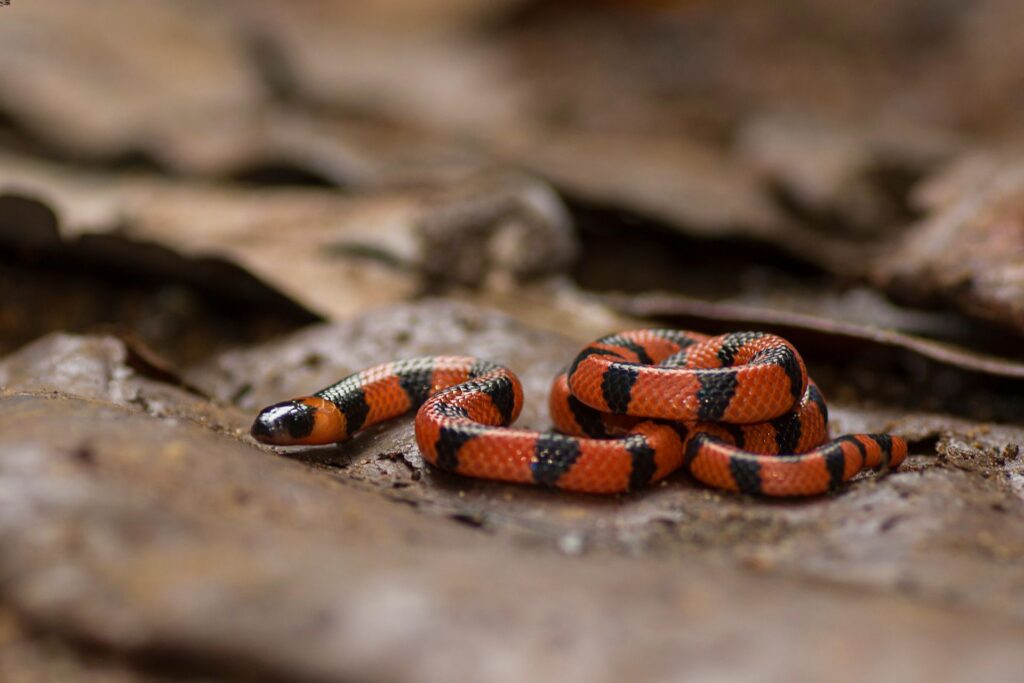
In stark contrast to camouflaged species, many venomous snakes advertise their dangerous nature through aposematic or warning coloration. The vibrant coral snake, with its distinctive red, black, and yellow bands, broadcasts its venomous status to potential predators. Similarly, the blue Malaysian coral snake displays an electric blue dorsal surface paired with a blood-red ventral side, creating an unmistakable warning to leave it alone. These bright colors serve as a visual reminder of the painful or deadly consequences of an attack, effectively teaching predators to avoid snakes with these patterns. Research has shown that predators can quickly learn to associate these warning colors with danger, often after just a single negative experience with a venomous species or even its harmless mimics.
Intimidating Displays: Making Themselves Look Bigger
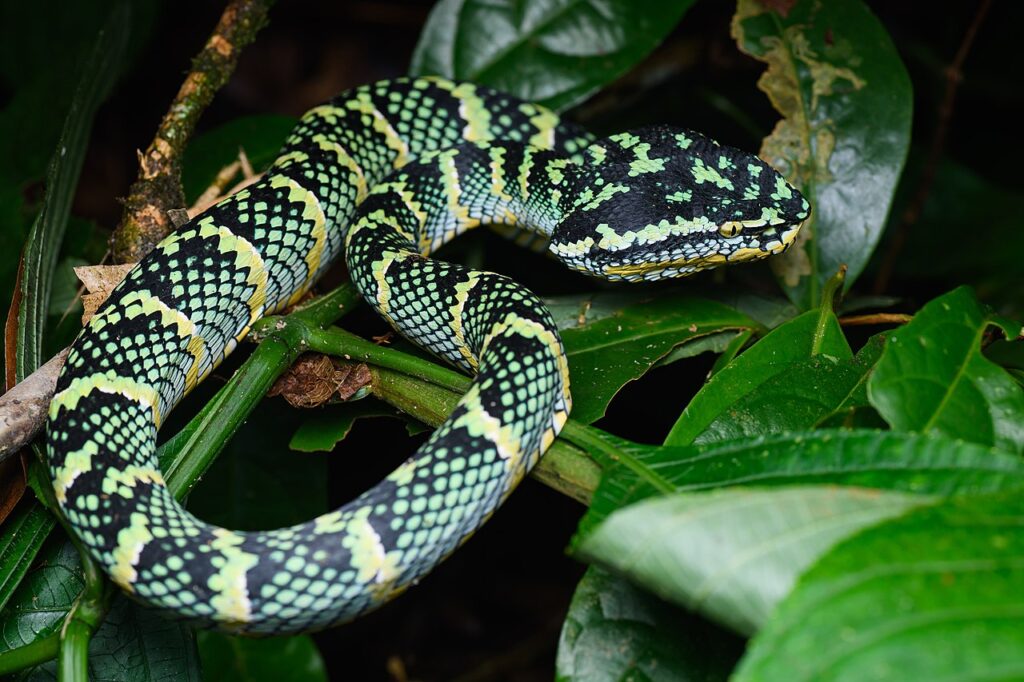
When camouflage fails and a venomous snake is detected, many species resort to intimidating displays designed to make themselves appear larger and more threatening. The king cobra can raise the front third of its body off the ground and spread its distinctive hood, instantly transforming from a ground-dwelling reptile into a towering threat. Similarly, many vipers will flatten their bodies to appear wider and more imposing when threatened. The eastern diamondback rattlesnake coils itself into an S-shape, raising the front portion of its body to increase its apparent size while simultaneously rattling its tail as a warning. These displays serve to intimidate potential predators by creating the illusion of a larger, more formidable adversary without requiring the snake to actually strike.
Auditory Warnings: The Infamous Rattle
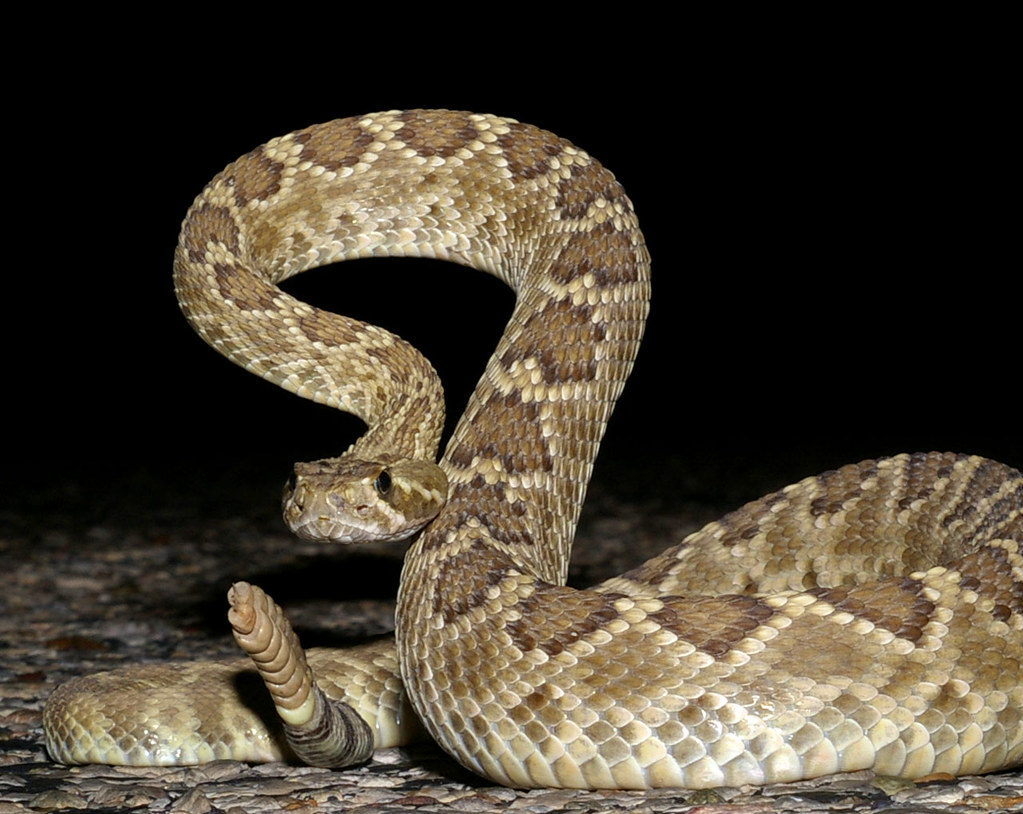
The rattlesnake’s signature sound represents one of the most recognizable auditory warning systems in the animal kingdom. Each time a rattlesnake sheds its skin, a new segment is added to its rattle, creating a built-in warning device that produces a distinctive buzzing sound when vibrated rapidly. This unmistakable warning serves as a clear communication to potential threats that danger is imminent if they don’t back away. The western diamondback rattlesnake can vibrate its rattle up to 50 times per second, creating a buzzing sound audible from several meters away. Other venomous snakes, like certain cobras and vipers, create auditory warnings by forcefully expelling air, producing intimidating hisses that can startle predators. These sonic warnings give potential threats the opportunity to retreat before the snake is forced to defend itself with a venomous bite.
Defensive Posturing: The Coil and Ready
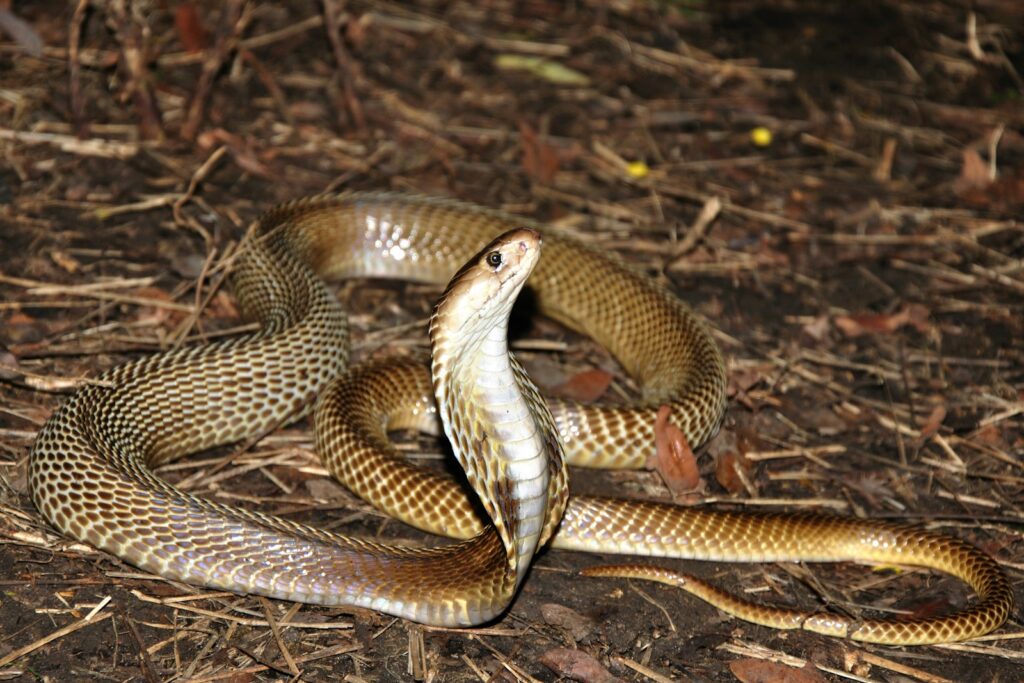
When threatened, most venomous snakes adopt defensive postures that prepare them for a potential strike while simultaneously serving as a warning. The classic S-shaped defensive coil of a viper not only prepares it mechanically for a strike if necessary but also signals its readiness to defend itself. Many cobras will raise the front portion of their body, spread their hood, and face the threat directly, tracking movements with remarkable precision. The death adder will arch its body slightly when disturbed, raising its head and tail simultaneously while keeping its middle in contact with the ground. These postures serve a dual purpose of preparing the snake physically for a defensive strike if absolutely necessary while clearly communicating to the threat that the snake is aware, alert, and ready to defend itself if pushed further.
False Strikes: The Bluff Attack
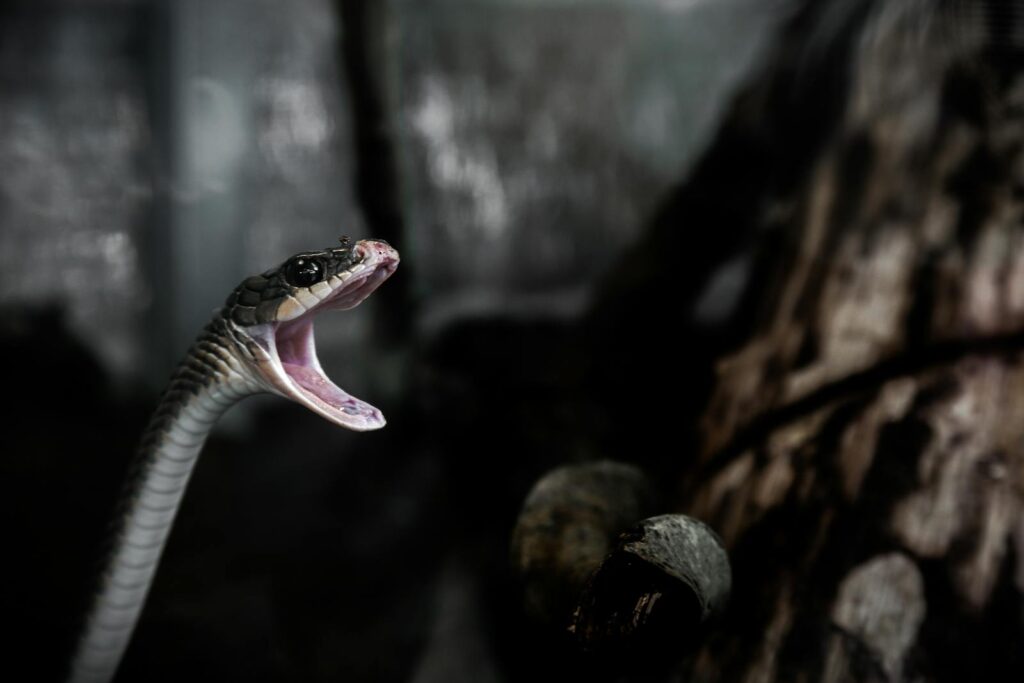
Many venomous snakes have perfected the art of the false or bluff strike, lunging toward a threat with closed mouth or deliberately missing the target. This theatrical display serves as a final warning before committing to an actual venomous bite, which represents a significant metabolic investment for the snake. The black mamba, despite its reputation for aggression, often performs several bluff strikes before delivering an actual bite, giving threats multiple opportunities to retreat. Gaboon vipers may launch their massive heads forward in a frightening display while deliberately falling short of making contact. Research suggests these bluff attacks are highly effective deterrents, as most predators will retreat after experiencing such an intimidating display, allowing the snake to conserve its precious venom for prey acquisition rather than defense.
Body Inflation: The Puff Adder’s Technique
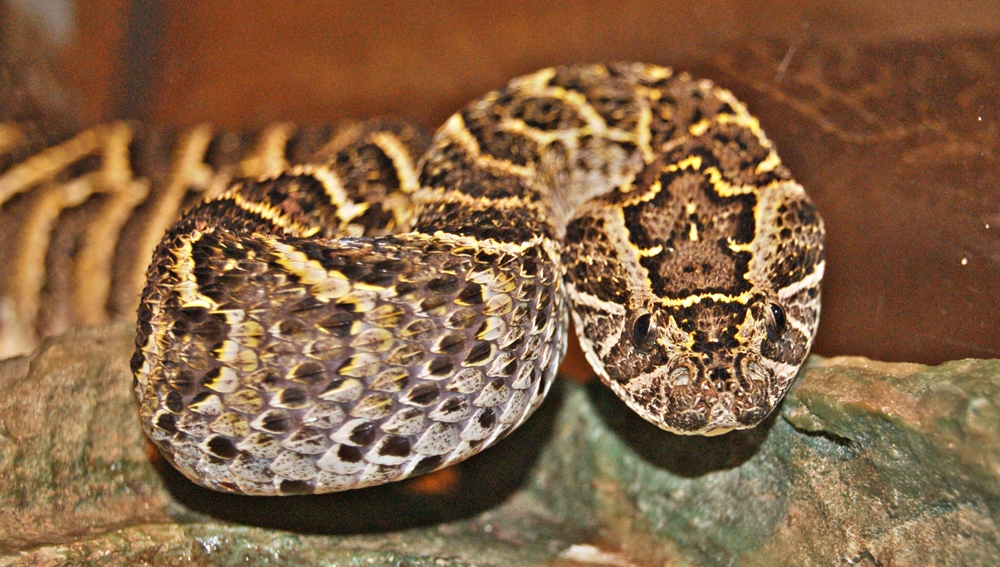
Several venomous snake species, particularly within the viper family, have developed the ability to rapidly inflate their bodies when threatened. The African puff adder, true to its name, can dramatically increase its apparent size by filling its lungs and flattening its body when disturbed. This sudden transformation can make the snake appear up to twice its normal width, creating a much more imposing adversary. The rhinoceros viper employs a similar tactic, inflating its body while simultaneously producing loud hisses as air is forcefully expelled. By combining visual intimidation with auditory warnings, these snakes create a multi-sensory deterrent that few predators would challenge. This inflation technique requires relatively little energy compared to fleeing or striking, making it an efficient defensive strategy.
Death Feigning: Playing Possum
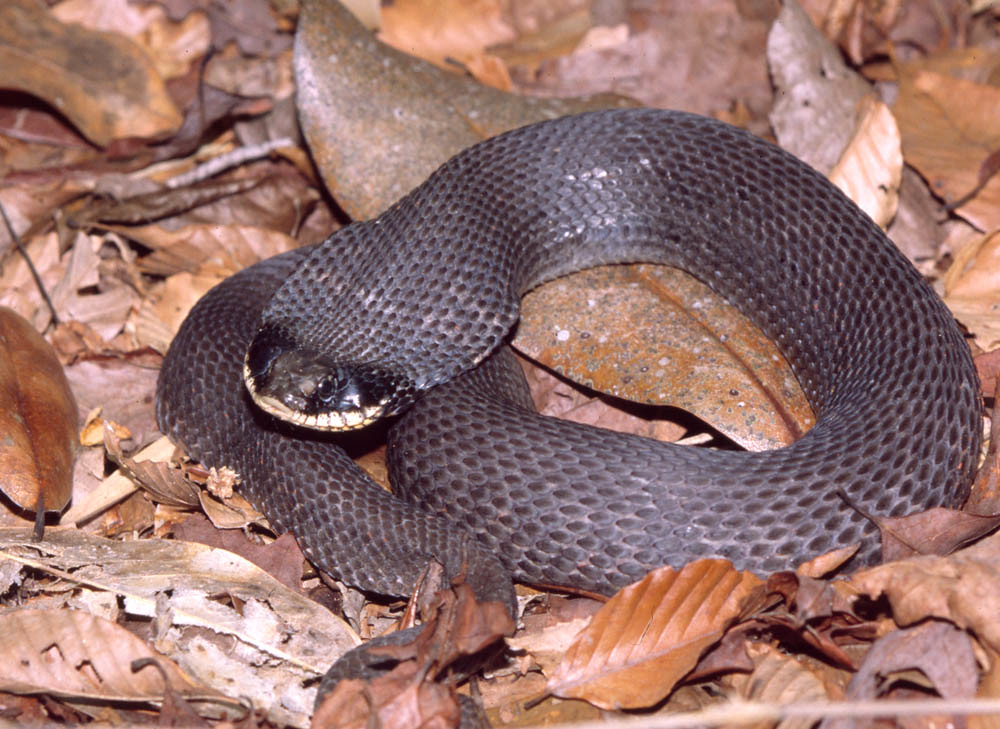
Some venomous snakes have evolved the remarkable ability to feign death when threatened, a behavior known as thanatosis. The eastern hognose snake is particularly known for this dramatic display, rolling onto its back, opening its mouth, and releasing a foul-smelling musk while appearing completely lifeless. Several venomous species, including certain cobras, will go completely limp and motionless when handled, only to “revive” and flee when the perceived threat has passed. This strategy exploits the fact that many predators are triggered to attack by movement and show less interest in prey that appears to be dead or decomposing. Death feigning can be remarkably convincing, with some snakes remaining in this state for minutes or even hours until they sense the danger has passed.
Musk Release: Chemical Deterrents
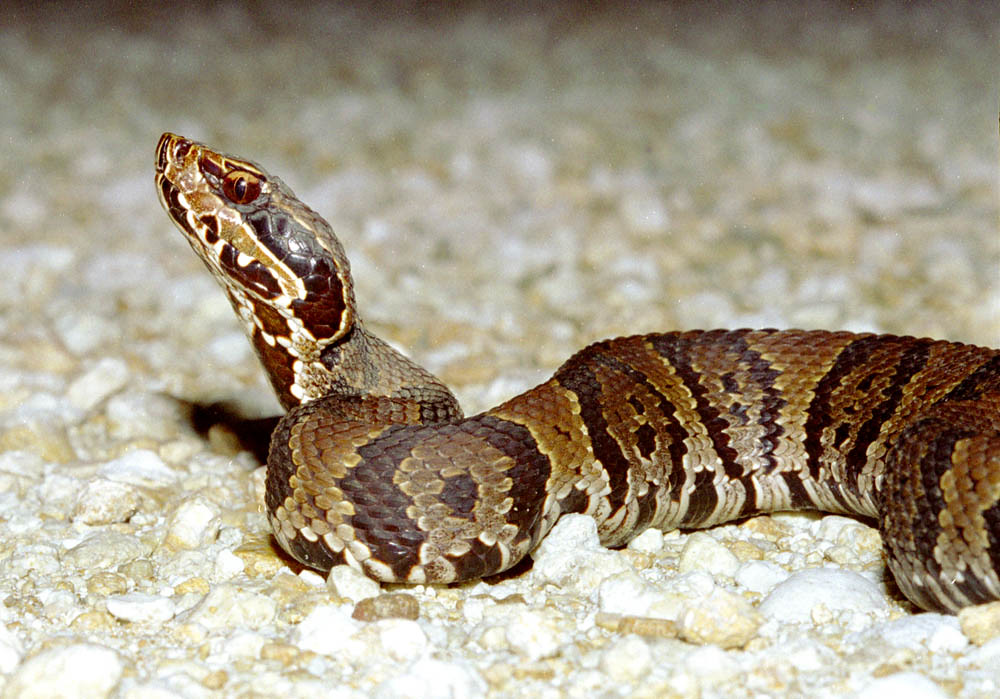
When physically threatened, many venomous snakes resort to releasing foul-smelling substances from their cloacal glands, creating a powerful olfactory deterrent. This malodorous musk can be so potent that it causes predators to immediately release the snake and retreat from the noxious chemical assault. The cottonmouth or water moccasin is particularly known for this defense, producing a secretion that smells strongly of rotting material. Rattlesnakes will often combine their auditory warning with musk release, creating a multi-sensory defensive display. Beyond the immediate repulsive effect, these chemical signals may serve as warning markers that linger in the environment, potentially deterring predators from returning to the area. This chemical defense requires minimal energy expenditure and poses no risk to the snake, making it an efficient first-line defense.
Tail Displays: Diverting Attention
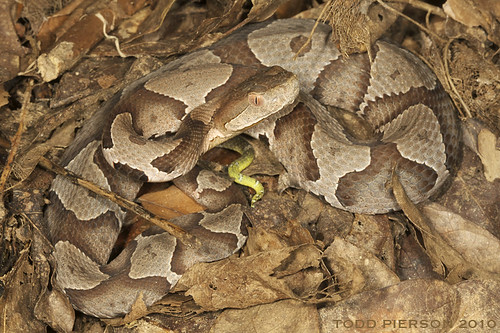
Many venomous snakes use their tails as decoys to divert attention away from their vulnerable heads. The brightly colored tail tip of the young copperhead stands in stark contrast to its camouflaged body, serving as a lure for prey but also potentially distracting predators during attacks. The death adder takes this strategy further, wiggling its worm-like tail tip while keeping its body perfectly still, drawing attention to this expendable body part rather than its head. Some species, like certain vipers, will hide their heads under coils while elevating and vibrating their tails, mimicking the head movements of a ready-to-strike snake. This tail-focused defense strategy gives the snake a better chance of surviving an attack, as injuries to the tail are generally less life-threatening than injuries to the head or body.
Regurgitation: The Last Resort
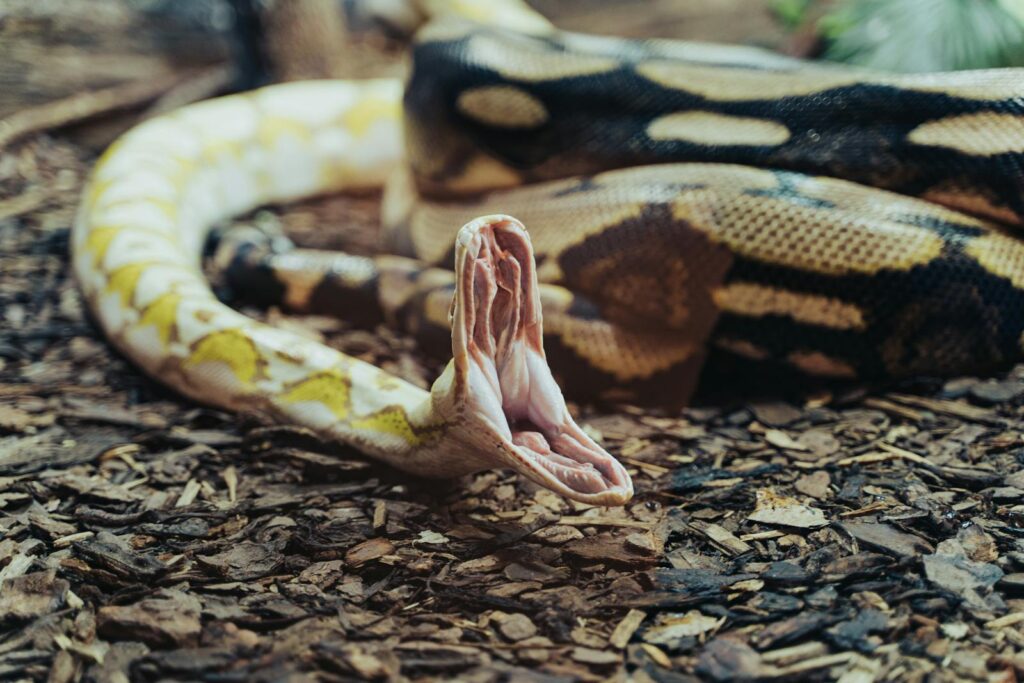
In extreme stress situations, some venomous snakes will regurgitate their recent meals as a defensive tactic. This seemingly desperate measure serves multiple purposes in a life-threatening situation. Firstly, it immediately reduces the snake’s weight and bulk, improving its ability to flee or maneuver if necessary. Secondly, the regurgitated prey items create a distraction that may momentarily divert a predator’s attention. The expelled stomach contents also produce strong odors that can confuse or repel certain predators, creating a sensory barrier. While this defense comes at a significant nutritional cost to the snake, it represents a logical trade-off between losing a meal and losing one’s life in extreme situations.
Escape Behaviors: The Strategic Retreat
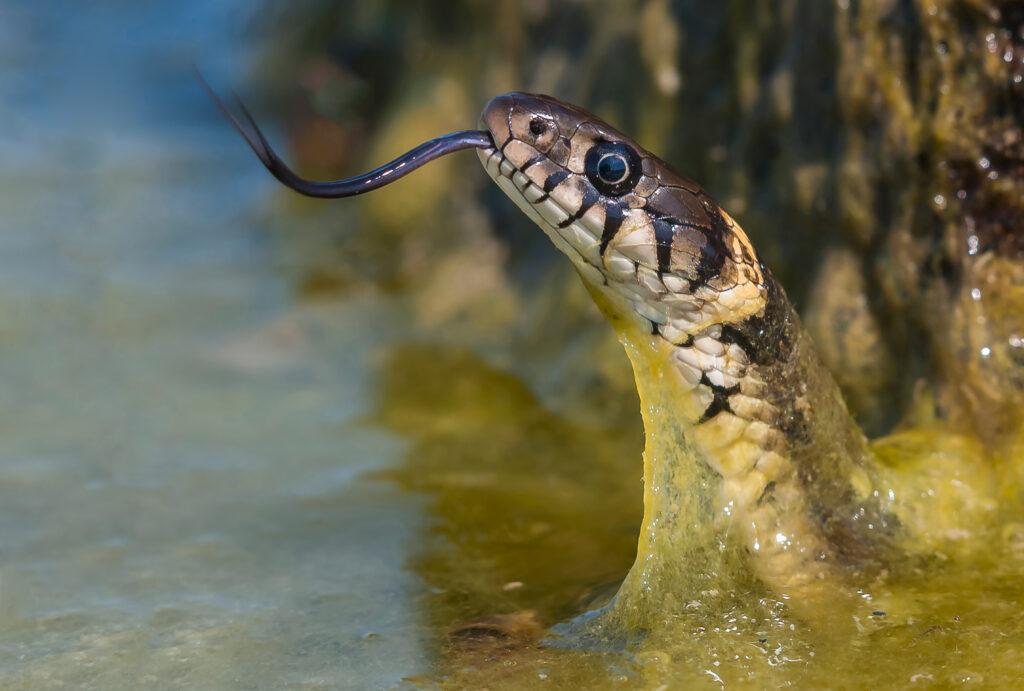
Rather than confronting threats, most venomous snakes prioritize escape whenever possible, using species-specific retreat behaviors developed through evolution. Aquatic venomous snakes like sea kraits and sea snakes will quickly dive and remain submerged when threatened at the water’s surface. Many terrestrial venomous species, including cobras and mambas, will use their remarkable speed to flee toward the nearest shelter, often maintaining visual contact with the threat while retreating. The sidewinder rattlesnake uses its distinctive sideways locomotion to rapidly traverse loose sand, a medium that would slow most other animals. These escape behaviors are typically the snake’s preferred response to threats, with defensive displays and strikes representing escalating responses only when retreat is impossible or the threat is particularly persistent.
Conservation of Venom: An Evolutionary Advantage

All these non-striking defensive strategies serve the crucial evolutionary purpose of conserving venom, a metabolically expensive resource primarily evolved for prey acquisition rather than defense. Producing venom requires significant energy investment from specialized glands, and replenishing depleted venom can take days or even weeks for some species. Research has demonstrated that many venomous snakes can control the amount of venom injected during a bite, often delivering “dry bites” with little or no venom when striking defensively. The cascade of non-venomous defensive behaviors observed in most species represents an efficient energy management system, reserving the valuable venom for its primary purpose of securing food. This strategic conservation of resources demonstrates the sophisticated evolutionary adaptations that have allowed venomous snakes to thrive across diverse environments worldwide.
Conclusion
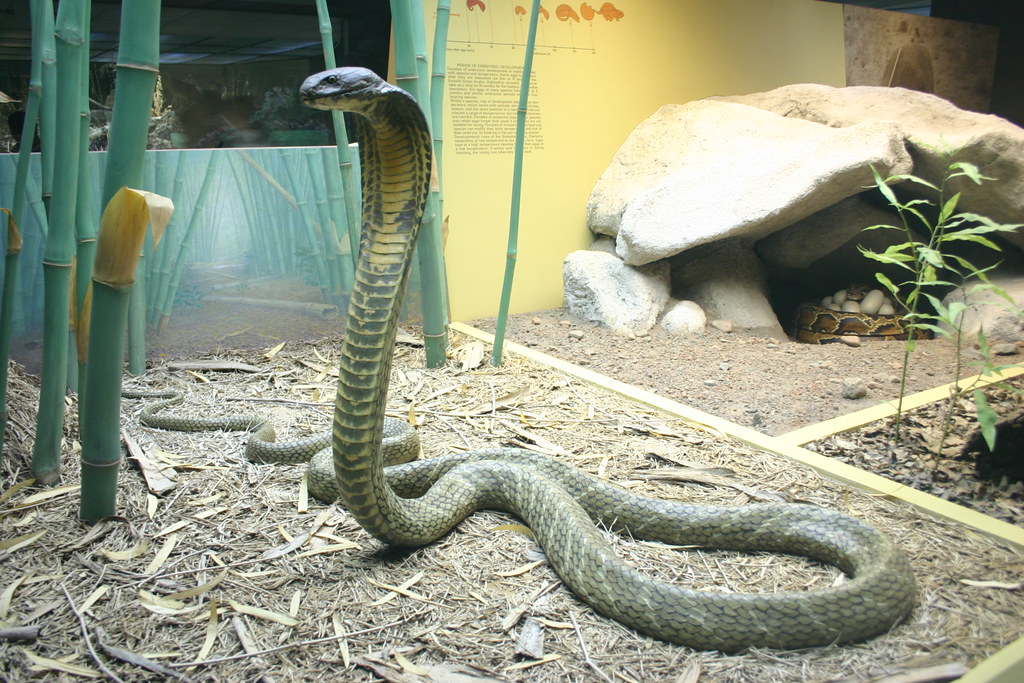
Venomous snakes represent a masterclass in strategic defense and resource management. Despite their fearsome reputation, these animals prioritize non-confrontational tactics whenever possible, from disappearing into their surroundings through camouflage to broadcasting clear warnings through colors, sounds, and displays. Their sophisticated multi-stage defensive repertoire reveals creatures that would rather avoid conflict than engage in it—a stark contrast to their popular portrayal. By understanding how these remarkable reptiles defend themselves without striking, we gain not only scientific insight but also practical knowledge that could prevent dangerous encounters. The next time you encounter a venomous snake in the wild, remember: it’s displaying its impressive arsenal of non-striking defenses not out of aggression, but in the universal language of “please leave me alone.”

